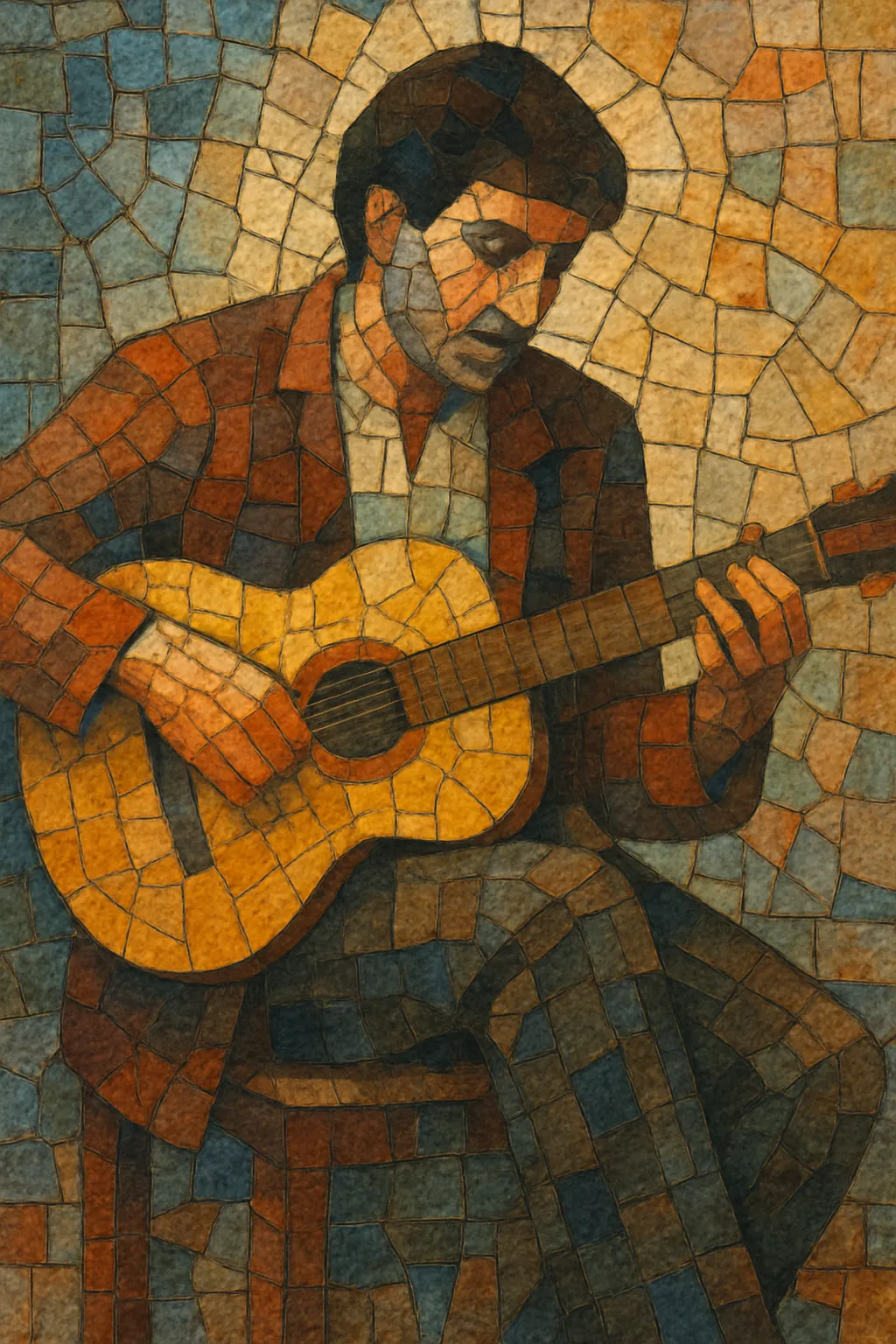Canzone d'autore is the Italian singer‑songwriter tradition distinguished by the centrality of literary, often poetic lyrics and an author’s personal voice.
While melodically rooted in the Italian canzone, it blends influences from French chanson, folk/folk‑rock, jazz, and pop, favoring nuanced storytelling, social reflection, and intimate confession over commercial showmanship. Arrangements range from voice-and-guitar or piano miniatures to sophisticated ensembles with strings, winds, and small jazz combos.
The genre values prosody, diction, and imagery, typically privileging the narrative arc and the text’s emotional clarity, with melodies designed to support the words rather than overpower them.
Postwar Italy saw a shift from traditional canzone toward more authorial songwriting influenced by French chanson and Anglo‑American folk/folk‑rock. Early catalysts included the Genoa school (Scuola genovese) around Gino Paoli and Luigi Tenco, with Fabrizio De André crystallizing the genre’s literary, often socially observant approach. Clubs, small theaters, and university circuits provided spaces for intimate performance beyond the big TV festivals.
The 1970s brought a flowering of the cantautore (singer‑songwriter) movement. Francesco Guccini, Francesco De Gregori, Lucio Dalla, and others broadened the palette from acoustic ballads to fuller band arrangements, incorporating jazz, folk‑rock, and pop‑rock. Lyrics increasingly engaged with history, social justice, and personal ethics, aligning the genre with Italy’s cultural debates of the decade.
Artists such as Paolo Conte, Ivano Fossati, and Giorgio Gaber refined harmonic language and theatrical presentation, integrating cabaret, jazz, and chamber textures. The establishment of Club Tenco and the Premio Tenco (mid‑1970s) institutionalized critical recognition, helping distinguish canzone d’autore from purely commercial pop while still allowing crossover hits.
The ethos of canzone d’autore—text first, authorial perspective, musical subtlety—continues to inform Italian pop, indie pop/rock, and acoustic scenes. New generations adopt its lyrical rigor and narrative sensibility, pairing them with modern production and hybrid influences while maintaining the genre’s core commitment to expressive, carefully crafted songwriting.
Center the song on an authorial voice: write poetic, image‑rich lyrics that balance storytelling with reflection. Favor clear Italian prosody and diction, aligning syllabic stress with melodic accents. Explore social themes, memory, ethics, and intimate relationships with nuance rather than slogans.
Use diatonic foundations enhanced by modal mixture and jazz‑tinged color tones (maj7, 9ths, suspended chords). Melodies should be singable and supportive of the text’s phrasing; allow space for words to breathe. Consider modulations or reharmonizations to mirror narrative shifts.
Keep tempos moderate (ballad to mid‑tempo). Draw from folk strums, gentle bossa‑influenced grooves, waltzes, and understated pop‑rock backbeats. Rhythmic subtlety is preferable to virtuosity; the pulse should carry the lyric naturally.
Start with voice plus acoustic guitar or piano. For color, add double bass or electric bass, brushed drums, clarinet/sax, accordion, and small string sections. Use counter‑melodies and light orchestration to underline key lines; avoid clutter that competes with the vocal.
Prioritize intelligibility and expressive nuance over power. Slight rubato and conversational phrasing can enhance intimacy. Production should be warm and dynamic, with careful attention to room tone and space that frames the singer and words.
Common forms include verse–refrain and strophic narrative. Let harmonic or textural developments track the story’s arc. Instrumental interludes can introduce new harmonic colors or reprise motifs that support lyrical themes.


